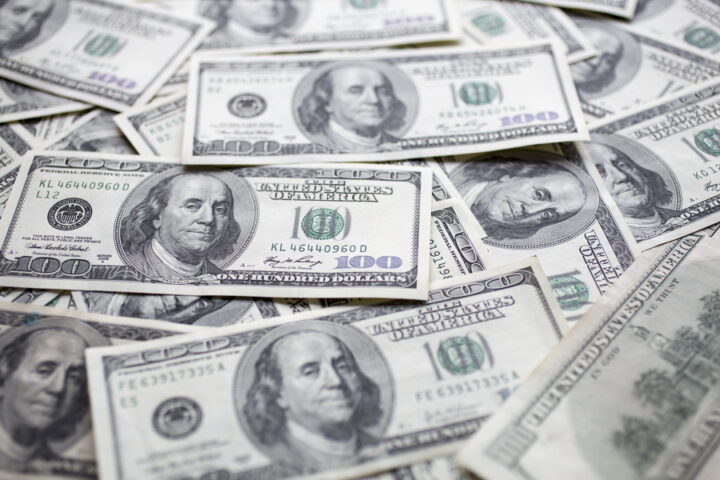 Oil prices rose to their highest in 2-1/2 years on Tuesday as investors worried that violence in Libya could spread to other top producers in the Middle East, while the strength of the dollar dented gold and base metals.
Oil prices rose to their highest in 2-1/2 years on Tuesday as investors worried that violence in Libya could spread to other top producers in the Middle East, while the strength of the dollar dented gold and base metals.
In agricultural commodities, arabica coffee futures hit fresh 13-1/2 year highs, boosted by a shortage of good-quality beans, while cocoa futures scaled new 32-year peaks.
Perceived safe-haven assets such as U.S. Treasuries and the Swiss franc gained at the expense of more growth-linked markets such as equities, which fell back from their recent 29-month highs in Europe, and industrial metals such as copper.
Libyan leader Muammar Gaddafi signalled defiance of a mounting revolt against his 41-year rule on Tuesday, appearing on state television and denying he had fled the country.
His forces have cracked down on anti-government demonstrators, with fighting now spreading to the capital Tripoli after erupting in Libya's oil-producing east last week.
U.S. crude futures hit a 2-1/2 year high on Tuesday on concern the violence could cut more of the OPEC-member's output and similar events could happen in neighbouring nations.
"Libya alone doesn't produce so much oil that there would be a supply shortage … even if there was a total collapse," said Carsten Fritsch, an analyst at Commerzbank.
"It produces around 1.6 mln barrels of oil per day, and OPEC has spare capacity of up to 6 mln barrels, so it is more fears that this might spread to places like Algeria, Kuwait or the United Arab Emirates," he added.
Libya is the third-largest oil producer in Africa and at least some 100,000 barrels per day — about 6 percent of the country's production — have been shut in.
U.S. crude for April delivery touched its highest since October 2008 at $98.48 a barrel before easing back to $96.14 a barrel, still up on the day.
Brent crude for April rose $1.46 to $107.21 a barrel by 1230 GMT, after climbing as high as $108.57 in early trade.
Industrialised countries will consider a coordinated release of oil from stocks to meet any supply disruption stemming from the political turmoil in the Middle East, Fatih Birol, chief economist of the International Energy Agency, said.
GOLD DIPS
With risk aversion running high, gold has been a beneficiary of steady safe-haven buying by investors seeking an alternative to volatile currencies, bonds or stocks and also as a safeguard against rising inflation stemming from stronger crude prices.
On Tuesday, the gold price fell by 0.7% after six straight days of gains as the impact of the stronger dollar outweighed the boost from purchases made on the back of the uncertainty surrounding the Middle East.
"It's not all one-way traffic," said Credit Agricole analyst Robin Bhar. "Obviously, we've had the turmoil escalating in the region and jitters and it's all understandable. Maybe this is the top for the time being."
He added, "Those safe-havens — the dollar, Treasuries and gold — should stay in demand, and other riskier assets such as equities and copper and so on will get sold off, as we've seen in the last 12 hours or so."
Spot gold was last down 0.6% on the day at $1,397.50 an ounce, having risen on Monday to its highest in nearly seven weeks, and was still set for a near-5 percent gain this month.
Gold, like Treasuries and the Swiss franc, tends to attract investors in times of political or financial turmoil as it did in 2010 with the euro zone debt crisis.
Copper prices on the London Metal Exchange hit three-week lows on Tuesday as the unrest in the Middle East curbed investors' appetite for risk, although they were still within sight of last week's record high at $10,190 a tonne.
Copper for three-month delivery on the London Metal Exchange was last quoted at $9,660 a tonne, compared with $9,810 at the close of business on Monday.
In agricultural commodities, ICE May arabica coffee futures rose 0.6% to $2.7440 per lb, having risen to a high of $2.7800, marking a fresh 13-1/2-year peak.
Tight supply of arabica coffee has emerged as a result of several below-par harvests from key producer Colombia and the resulting rise in price has encouraged roasters to increase the volume of cheaper robusta beans in blends where possible.
May cocoa futures on ICE stood $38 or 1.1% higher at $3,537 a tonne after rising earlier to a 32-year peak for the second month of $3,574.







